Croatian Design Studio Trumpic/Prenc Awarded Prestigious AD&D Wood Pencil
May 31, 2023 - The prize from one of the most prestigious competitions in design and advertising, the British D&AD, is in the hands of the Croatian design Studio Tumpic/Prenc. These creatives won the Wood Pencil in the Packaging design category for the design of the olive oil bottle "Istriana" for their client E Pluribus Unum.
As Poslovni writes, D&AD, short for Design and Art Direction, is a British organisation founded in 1962 to promote excellence in design and advertising. Every year it raises the bar of quality in this industry, and it does so with the annual competition, i.e., the D&AD Pencils awards, which are known for the most outstanding creative achievement in the profession.
At this year's edition of this iconic competition, over 300 members of the jury, all leaders of the creative sector chose the winners from as many as 12,243 submitted works from 77 countries around the world, and the Croatian design Studio Tumpic/Prenc is the only representative from Croatia, as well as the region. The Wood Pencil Award declares the "Istriana" project one of the best works of the year in its category, and as such, it becomes an example of creative excellence for future generations who will look to D&AD for their inspiration.
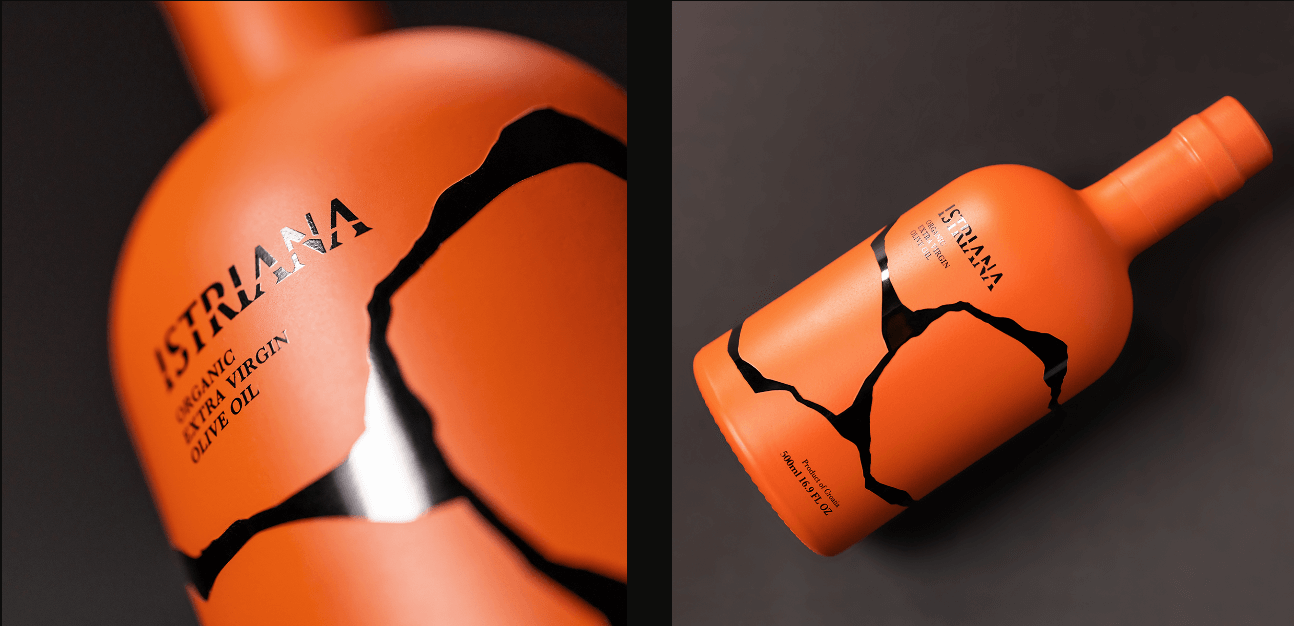
The design of these creatives, which has earned its place among the best of the best, emphasises the connection with the past. Namely, Istrian olive oil was mentioned as a synonym of quality as early as the time of the Roman Empire, but with its disintegration, Istria no longer enjoyed the reputation it had in the Roman period. However, due to its natural prerequisites for the creation of superior olive oil, in the 90s, it gradually regained its status as one of the world's best regions for olive growing.
It could be said that finding fragments of forgotten knowledge gives life to modern olive growing. The bottle also shows the reconstruction of various fragments of the amphora reassembled into a meaningful whole. In addition, once placed in the box, the bottle represents the heart of a specific shape of a Roman amphora from the Istrian area, where olive oil was stored and transported. Also, the orange tone of the terracotta, specially mixed for use on the packaging, contains a percentage of actual Istrian soil.
Upon realising this project, the Studio collaborated with the Italian companies Wine & Industrial Packaging and Tipografia Crivellari 1918. The creative minds behind this winning idea were awarded as part of the D&AD Festival that took place at the end of last week in London, and on this occasion, they declare:
"D&AD is one of the most respected festivals in the industry, so to be recognised next to the big brands present at it, such as Nike, KFC, Mars, Calvin Klein, Google, Burger King, NFL and other Wood Pencil winners, it is certainly a great honour, all the more so because it is a product whose role from the beginning was to promote Istria, i.e. Croatia, with its design and name. This is another way to achieve his goal", concluded the Croatian design Studio Tumpic/Prenc.
For more, make sure to check out our dedicated News section.
Rijeka Designer Marko Perozic Stands Out to John Malkovich
November the 26th, 2022 - Rijeka designer Marko Perozic has managed to make himself and the company he works for stand out to no less than John Malkovich, and his new play which recently premiered in Lisbon is putting creative, talented Croatian poster design on display.
As Poslovni Dnevnik writes, the leading voice in this brand new play, which is actually an adaptation of the book "Nazi Literature in America", is played by the famous actor John Malkovich himself, and the plot is set in Chile, which was therefore the inspiration for this creative solution which the Rijeka designer Marko Perozic dealt with excellently.
''First of all, we had to do a little research on the play, the theme. We came to the point that it would be good to translate the Chilean flag and motif into direct communication on the poster itself,'' said Marko Perozic, the co-owner and creative director of a design and marketing agency from Rijeka.
The creation of the poster was ordered by an agency with which the company from Rijeka cooperates, which organises concerts, plays and represents famous people in marketing. One of them is John Malkovich who, out of three offered design solutions by the Rijeka company, chose this one.
''It was quite fun. It's nice when someone like him approves some kind of visual,'' Rijeka designer Marko Perozic pointed out for HRT.
It is otherwise one in a series of successful jobs done by this particular design agency from Rijeka, whose team consists of eleven creative people. They are engaged in marketing, the creation of design solutions and the branding of various products and services.
For more, make sure to keep up with our news section. For more on Croatian design, products, companies and entrepreneurs, make sure to check out our dedicated Made in Croatia section.
Meet the Makers: Likamee Wool Rugs, Eco-Friendly and Imperfectly Perfect
In the age of mass-production and overconsumption, artisanal crafts seem to be making a comeback as more and more people crave authenticity over standardised manufacturing. We’re starting a new series to highlight the talented Croatian artisans creating extraordinary things, looking to learn more about their crafts. First up in Meet the Makers, an interview with the woman who’s turning discarded sheep fleece into stunning, eco-friendly wool rugs
Scrolling through my news feed one day, an image caught my eye. A star-shaped white rug, covered in streaks of bright pink and orange, that looked incredibly soft and entirely unique. That’s how I first learned of Likamee wool, a small family business manufacturing felted wool rugs.
Likamee wool is run by two exceptional women: Nada Jandrić, the artisan creating the rugs, and her daughter Ivana who manages the Likamee socials and is also familiar with the craft herself. I reached out to them to learn more about their work and the stars aligned just right for us to meet in Zagreb for a chat.
Blurring the line between home decor and art, Likamee rugs are beautiful, one of a kind pieces, but there’s a lot to appreciate about this unique product beyond the aesthetic.

All the rugs are handmade, eco-friendly and animal-friendly, and I was curious to find out what led Nada to start practising such a specific craft. I thought this creative endeavour may have organically evolved from a love of arts and crafts in general, but she was in fact inspired by a documentary she saw about the environmental impact of wool as a pollutant.
You read that right - raw natural fiber can very well be a pollutant. Annual sheep shearing leaves behind massive quantities of fleece which essentially turns into waste overnight. Some people burn the leftover wool, some bury it, some just send it to landfill. On her part, Nada wanted to work out a way to recycle the fleece and give it a new life.
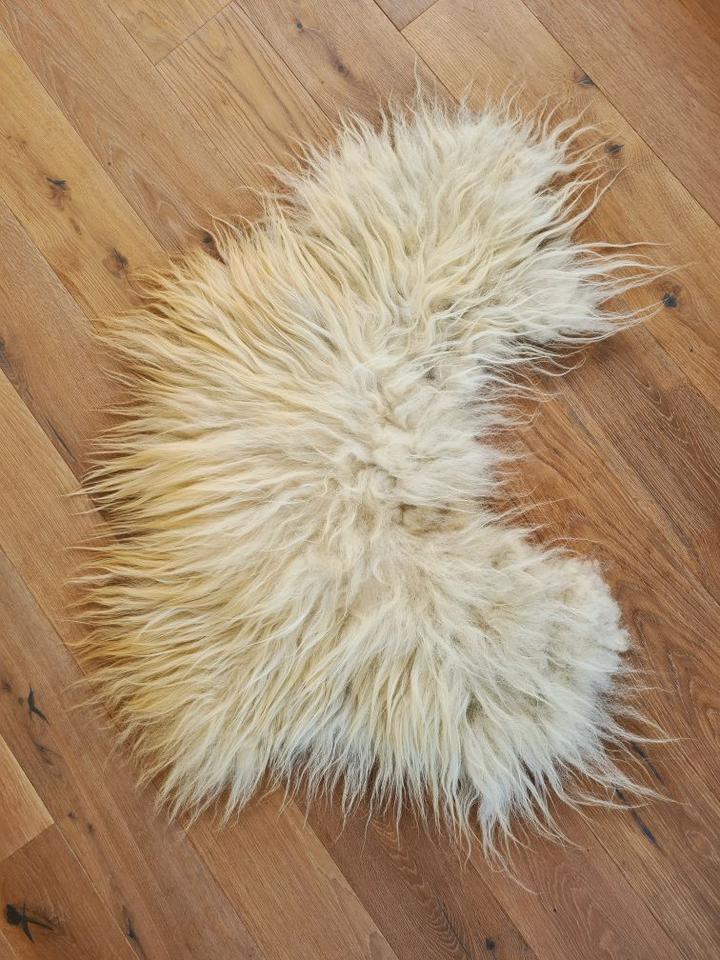
‘I had some unprocessed wool at home and the documentary got me thinking. If I could get more wool, what would I do with it? I don’t knit, I don’t spin yarn… I wanted to do something no one else was doing. So I did some googling, learned about felting, and I really liked the concept. I gave it a try; I started small, making pom-poms. Then I got myself a few felting needles and little by little, my projects expanded in size. Small at first, the rugs grew larger and larger until I made one with a 2-metre diameter.’
That particular rug is the largest she made to date and weighs an impressive 8 kilos, but on average Likamee rugs weigh around 2-3 kilos each (6,5lb). Coincidentally, that’s exactly how much wool is typically shorn from a single sheep, resulting in a neat principle of one sheep - one rug, give or take. I was delighted to learn that Likamee wool rugs have an easily traced origin, and a sweet story at that.
‘I source my wool from a woman who lives in Lika and tends to a flock of one hundred sheep. She loves those sheep so much. Each one has a name, and they respond to their names when called! It’s really something else. As an animal lover, I want that flock to be preserved for as long as possible.’
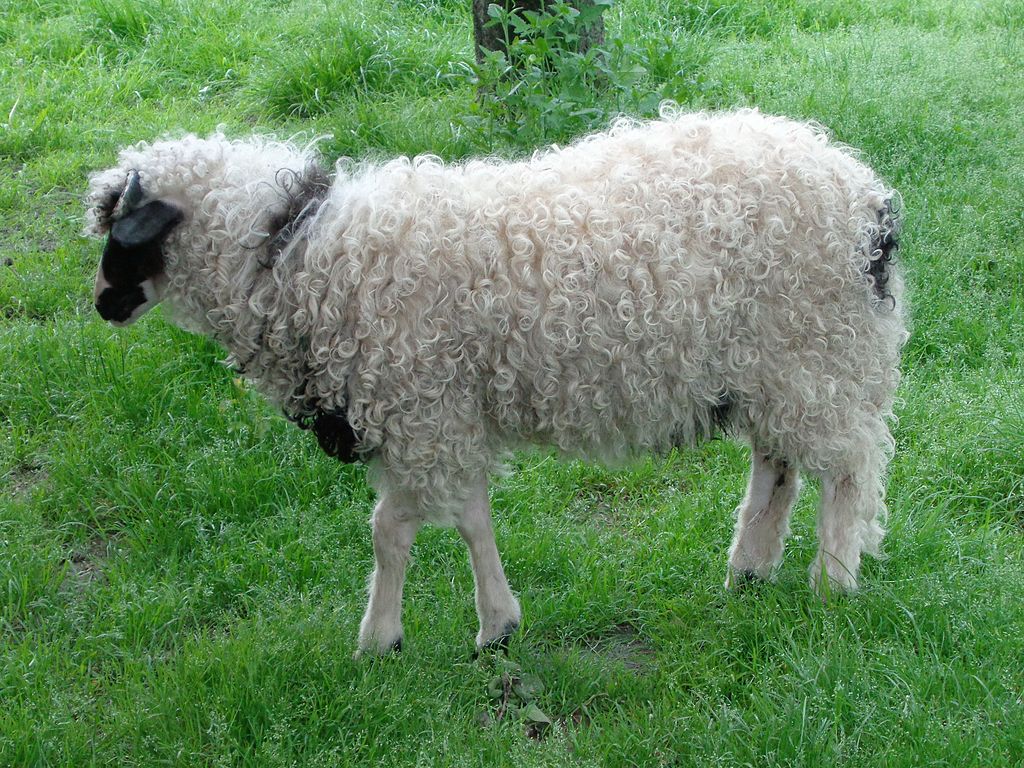
Lika Pramenka sheep / Wiki Commons
Animal-friendly manufacturing is a crucial part of the Likamee philosophy. Some of the rugs are made to imitate the look of sheepskin, but only in appearance: batches of shorn fleece are bonded by felting, resulting in beautiful and durable pieces created without any harm coming to animals.
‘My sheep are all safe and sound, they just get a haircut every once in a while’, said Nada with a laugh.

A sheep fleece Likamee rug with felted mat backing
These days, sourcing wool is the least of her concerns. Friends and family were very much on board ever since they first learned about the rugs, and everyone was happy to help by bringing more fleece for future projects. Nada soon had so much wool on her hands, storing it became a challenge. Once you have the raw material ready, what’s next?
As you might imagine, making a woollen rug by hand is a lengthy, demanding process. Nada and Ivana took me through all the steps involved in hand processing of wool, and learning how much time and effort is invested into each piece only made me appreciate the craft all the more.
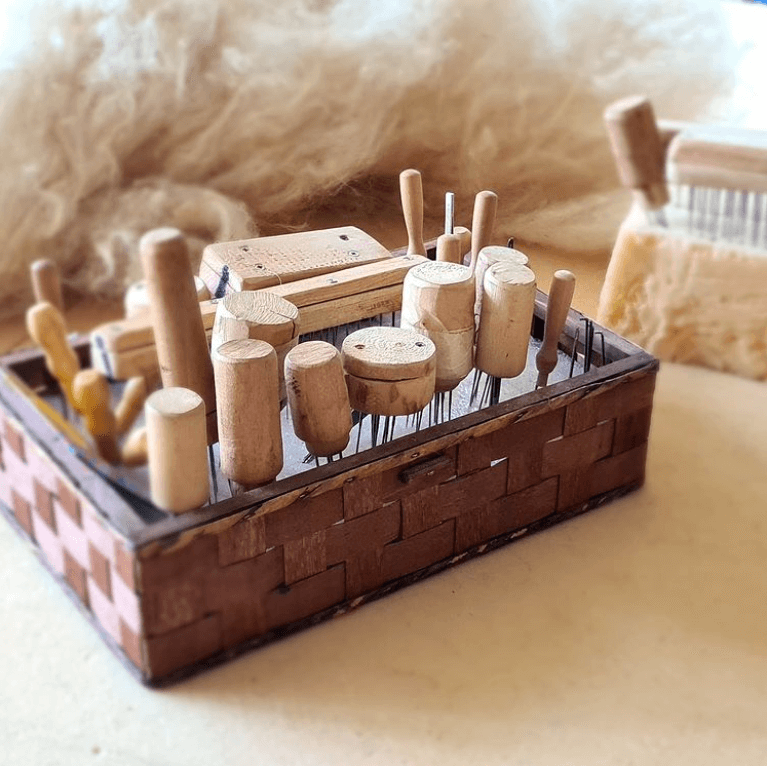
An assortment of felting needles, all handmade for Likamee manufacturing purposes
‘Say I was making a small rug and putting a few hours into it every day, it’d take me about a week to finish it. Since I’m basically stabbing wool [with the felting needle] by hand the whole time, I can work for four hours at a time, tops', says Nada. Check out the Instagram video showing the first stage of the dry felting process.
The creation of a rug is just the final step, though, and it’s the preparatory work that actually requires the most effort. There are stages to working with unprocessed fleece: it needs to be washed first, and that alone can take days.
Raw fleece typically has an unpleasant smell and is covered in mud, dirt and grease, so it needs to go through the wash a few times before it’s considered clean enough for further processing. Soak, rinse, repeat. Nada and Ivana do it all by hand.
‘You could technically use a washer, but all washing machines are too rough on wool even on the most gentle cycles. What occurs is that the fleece sort of felts itself and then you need to rip it apart again. That’d be incredibly hard: once wool is felted, it can very well last forever. So we wash it by hand instead.’
Once it’s air dried, the clean fleece goes through several rounds of combing. It’s split into smaller chunks with the help of a carding machine, is then combed by hand, and finally goes through a mechanical tool for fine carding (see the carder in action in this video). Is that the big contraption I saw on their Instagram? We wish it were big, they replied with a laugh.

The biggest carding tools intended for hobbyists are 30cm wide - it’s not much when you have to prep enough wool to make a rug, but anything bigger than that is only made for industrial manufacturing. They could really use a larger carder to process more wool at once, but had no luck searching for one.
‘Since my dad can make anything, he offered to build us a custom carding tool if we got him a metal sheet fitted with combing pins. Turns out, you can’t get one anywhere. We couldn’t source individual parts to build a bigger carder on our own, and so we struggle with the small one that we have. That’s why it takes so long; it’s a lengthy process in part due to the equipment’, explained Ivana.
Rough batches of wool are fine-combed until they transform into soft, airy clouds:
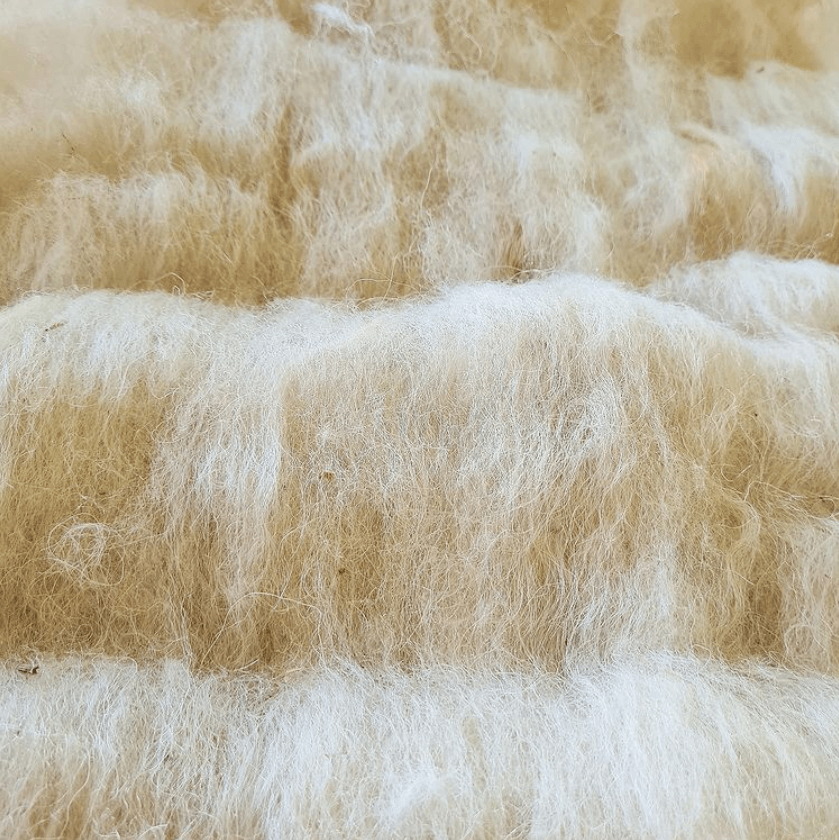
At that point, it’s finally time to felt. Several sheets of wool are stacked on a foam mat to make a rug, the number of sheets depending on the type of wool. Some are softer, some a bit rougher.
‘Our wool from Lika is more coarse, it takes more effort to work with. I also use wool from Pag island, that one’s softer. Interestingly, both are the Pramenka sheep breed, just originating from different areas.’
All Likamee rugs are unique, and Nada never makes the same design twice because it’s virtually impossible to repeat the same pattern. While some rugs retain the soft hues of natural sheep fleece, I’ve noticed a few eye-catching designs with accents of colour.
‘I started to dye the wool just to see how it would turn out. Since I’m working with eco wool, it only made sense to use eco-friendly dyes as well. I used coloured pencils at first and liked how it came out, then I started using natural purple dye. I’m planning to give avocado a try too… but mostly I just use natural wool. The experiments are more to ensure I have enough dyed wool at hand in case someone commissions a rug in a specific colour or pattern.’
Commissions are coming in indeed, and what started as a creative experiment and evolved into a hobby is now taking the shape of a business. For the last five years, it’s been all about learning. Now they’re working on branding and marketing, with Ivana managing the Likamee website and social media pages.
While they would both love for the project to become commercially viable and turn into a fully fledged family business, they primarily aim to build a strong design brand with a well-defined image: eco-friendly, high quality products.

In the meantime, they’re enjoying the creative process. Ivana said, ‘People love working with their hands, but aren’t fully aware of this until they actually start making something. It’s meditative, you get completely lost in it. It’s a different kind of focus than filling Excel sheets or preparing work presentations. We really enjoy it. It can be exhausting, but it’s so fulfilling.'
'The work is challenging, but so interesting', agreed Nada. 'There are times you get annoyed when something isn't turning out as you planned, but once you see your finished product, you know it’s all been worth it.'
We wish the best of luck to Likamee wool - head over to their website to browse the rug selection, and follow them on Instagram.
Unless otherwise noted, all images are courtesy of Likamee wool.
Croatian Product Design Studio Shortlisted for WIN Awards 2017
The product design studio from Zagreb placed among seven candidates shortlisted for the WIN award
Croatian Design Brand VAU Wins Three Prestigious German Design Awards
VAU combines minimalistic design, traditional craftsmanship and high-tech manufacturing to create unique everyday objects.



